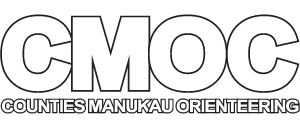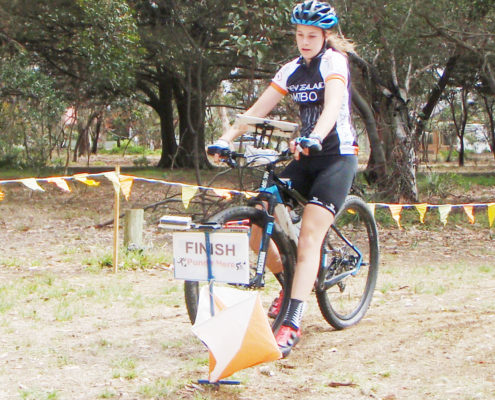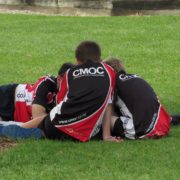One of our club members, Georgia Skelton represented NZ at the Australian Mountain Bike Orienteering Championships in 2017 in the Open Womens Grade and achieved top three places in two events. This was a remarkable achievement because she was only 15 at the time. She gave a talk about mountain bike orienteering at the AGM in December, which is reproduced below.
Hi everyone, I’m Georgia and some of you might know that as well as foot orienteering, I love and compete in mountain bike orienteering. Tonight I’m going to talk about some differences between MTBO and foot orienteering for those of you who might not know much about it and some of my own experiences in the sport.
MTBO is essentially what the name implies – orienteering while riding a mountain bike. A map board is fixed to the handlebars of your bike and the map fits onto a metal plate which swivels so you can keep your map orientated. I also use little magnets to keep my position on the map as unlike foot orienteering you can’t really keep your finger on where you are for obvious reasons. Its also quite hard to plan routes and navigate while riding at such a high speed and if you look at your map for too long you will probably hit a couple of trees!
Unlike foot orienteering, you must stick to tracks and open land and are not allowed to ride through the bush. Some tracks are one way so route choice is especially important as you can’t turn around and go back if you change your mind. But it wouldn’t be New Zealand if there weren’t any unique rules., and we are the only country which allows riders to cross open forest marked white on the map. This doesn’t make much of an impact though as 9 times out of 10 the vegetation on an MTBO map is marked completely green due to the thick bush that surrounds the tracks.
The layout of an MTBO event is similar to that of a normal foot orienteering event, with a sprint and middle on the first day then a long the next. A long event is usually around 15 – 25km with the latter taking close to two hours, but as you know even over that amount of time, it always comes down to seconds. We use idents as the timing system as well and have lately been using sport ident airs, so you can zoom the control without having to stop and lose speed.
I first started MTBO in 2015 and being a competitive mountain biker already it was really cool to merge my two favourite sports. MTBO for me combines the navigation aspect of orienteering with the speed and technicality of mountain biking, creating an exhilarating, fast-paced sport. When riding you are traveling at a much faster speed than you are able to run, so tracks and junctions come up a lot quicker. This makes it a lot easier to overshoot controls or miss a track, and then it is harder to relocate as all you have to go off is the shape of the track and the occasional feature.
Some of my favourite races include the 2016 nationals in New Plymouth, where the sprint and middle were held in a huge graveyard and memorial gardens and an adjacent high school. That was an amazing map and those of you going to Junior Camp in a couple weeks will get the chance to run on it. Another highlight was doing a 6-hour mountain bike rogaine with dad in Rotorua, covering most of Whakarewarewa forest.
However, my proudest moment in MTBO so far was being selected to challenge Australia in the NZ W21 elite team at 16. I competed there in three races in October against some of the best, like NZ’s Marquita Gelderman, Junior MTBO silver medalist Lucy Mackie and the no. 7th in the world, Antonia Haga from Finland. Training and competing over there was an amazing experience and I had some really good races. A lesson I took away from my racing in Aussie is that boundaries are not limits, but bars that are set, pushed and broken.
I would have never got to Aus though, if it wasn’t for my parents who support me 100% in whatever I do, or Counties Manukau Orienteering Club. I would like to thank the club for their support and interest for me in both MTBO and foot orienteering, and I definitely wouldn’t have been able to race without them.
Next year, I have been given the possibility to travel to Austria for the Junior World MTBO champs, which is my next goal which I hope to achieve. I also want to help promote the sport in NZ, as compared to Europe where there could be 100 route choices for one leg, we don’t have local forests with a big enough track network or the manpower to put on regular events. Hopefully, in the near future, we can get more people involved in this amazing sport and grow it in NZ.


